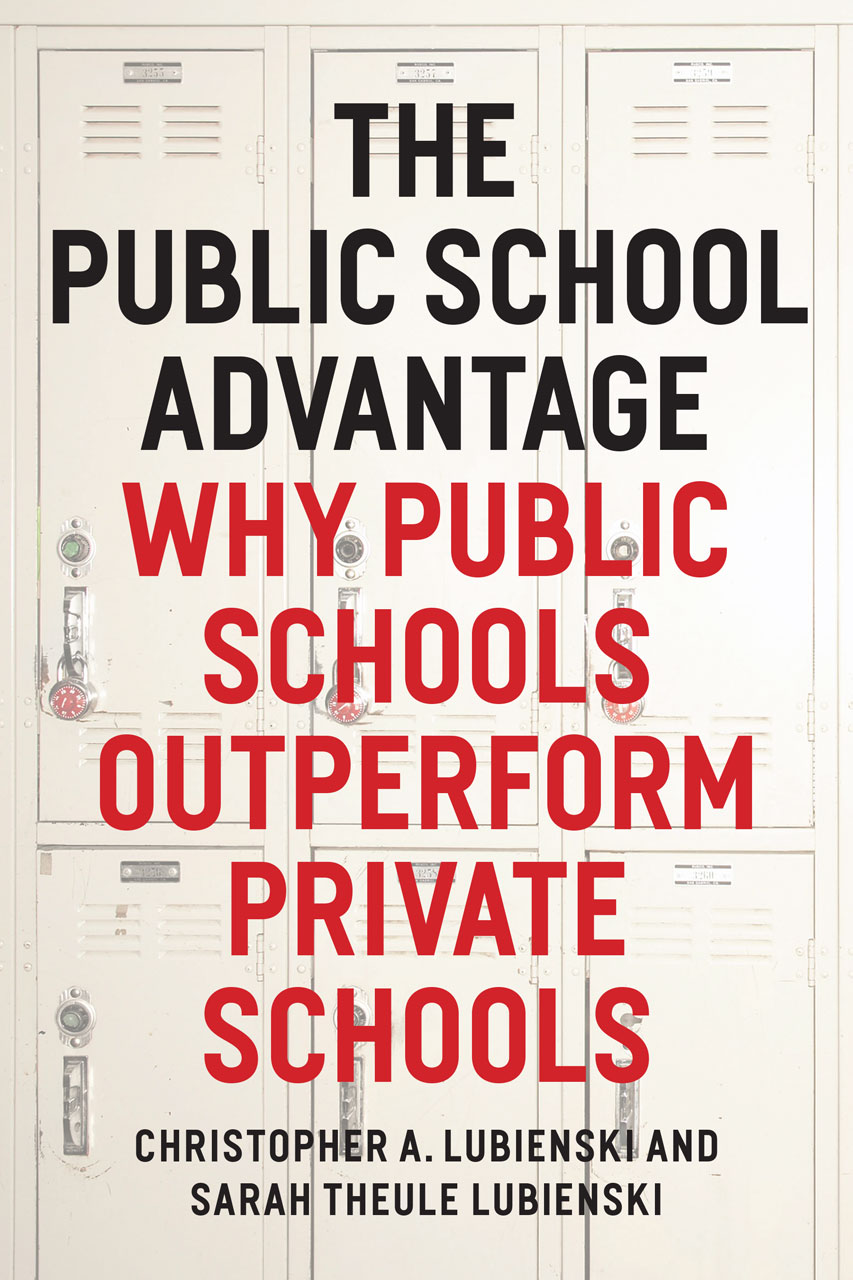Defending The Public School Advantage
Christopher A. Lubienski and Sarah Theule Lubienski’s The Public School Advantage: Why Public Schools Outperform Private Schools takes on a daunting task: disputing the assertion that markets can solve our social problems, as evidenced by performances of private, voucher-based, and charter schools.
Since the first charter school was established in Minnesota, in 1992, and in the wake of No Child Left Behind, the fact of public agencies endowing private and semi-private educational institutions has remained controversial, as funding for capital improvements in our public schools (especially those in inner cities) continues to drop.
The case made by the Lubienskis is simple: drawing on two recent, large-scale, and nationally representative databases, they show that any benefit seen in private school performance now is more than explained by demographics. Private schools perform better because their students come from backgrounds of privilege, and are able to access support at many levels unfathomable for their public school counterparts. Despite this, as the Lubienskis demonstrate, gains in student achievement at public schools are at least as great and often greater than those at private ones.
In response to a recent piece published by Education Next, Chris Lubienski defended the arguments made in the book, and we excerpt a portion of his response, directed at claims of bias with regard to achievement tests and datasets, below:
The main shortcoming of Wolf and the bloggers’ efforts to refute our findings is that, for evidence, they simply point to evaluations of voucher programs, usually ones that they have conducted. As we have noted before, even if we accept the validity of their studies, these evaluations of local voucher programs simply do not address the issue at hand — the larger question of achievement in different types of schools. They are purporting to measure the impact of vouchers in what are actually small, non-representative samples of public and private schools. We are drawing from large, nationally representative datasets. Their studies are actually program evaluations in local contexts, and do not address the larger question of the relative effectiveness of U.S. public and private schools, despite what they claim. Wolf studies the effects of vouchers on students who are attempting to leave a specific public school for a private school that appears more desirable on some measure, whether it be peer demographics, instructional quality, or the use of uniforms. One cannot generalize to all public and private schools from such studies. Thus, it is simply silly to claim — as does a blog post from the libertarian Cato Institute — that “private schools beat public schools” based on those studies, especially when they provide absolutely no evidence that this is generally true. . . .
To read Lubienski’s response in full, click here.
To read more about The Public School Advantage, click here.
